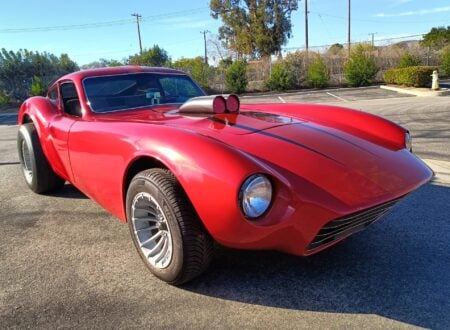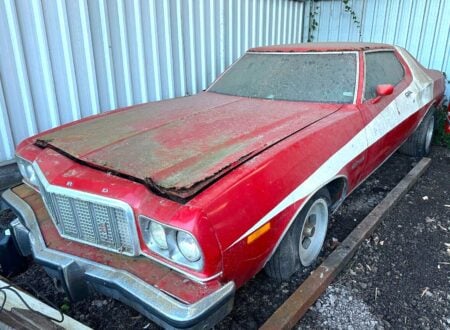This is the 2005 Ford GT that was a memorable part of Paul Walker’s “Always Evolving Collection,” it’s one of 14 finished in Mark IV Red and it was specified without racing stripes.
The Ford GT was developed as a modern day supercar that evoked the spirit of the 1960s 24 Hour of Le Mans-winning originals. The car proved to be an instant sales success, and it’s still highly sought after by collectors today.
Fast Facts: The 2005 Ford GT
- The 2005 Ford GT was developed to revive the look and feel of the 1960s Le Mans winners on a larger, modern-regulation-compliant platform, with an aluminum structure, and a supercharged 5.4 liter V8 producing 550 bhp and 500 lb ft. Testing confirmed 0 to 60 mph runs in the mid-three-second range and a 205 mph top speed.
- Production ran from mid-2004 to late 2006 with a multi-site build process using Mayflower Vehicle Systems, Saleen Special Vehicles, and Ford’s SVT team at Wixom. A total of 4,038 cars were built, each with an individual dash plaque. Privateer teams later raced heavily modified versions in GT1 and GT3 competition in the United States and Europe.
- This Mark IV Red example is one of 14 produced in that color without stripes and was part of Paul Walker’s “Always Evolving Collection.” It shows 3,701 miles and carries documented registration history in Virginia, California, and Montana. Known early production issues on these cars were addressed by Ford, and long-term reliability has proven strong for most owners.
- The car has ADV.1 wheels, Michelin Pilot Sport Cup 2 tires, Sparco seats with carbon-fiber shells, aluminum interior trim, and a McIntosh stereo. It is offered out of California with a clean Carfax report, a clean Montana title, an SCT tuner, and a spare wheel set.
History Speedrun: The 2005 Ford GT
The idea of reviving the Ford GT40 for the 21st century as a homegrown American supercar took shape inside the offices of the Blue Oval at a moment in time when the company needed a shot of confidence. The early 2000s had seen tighter budgets and rapidly shifting product lines, but the Ford design studio was looking to reconnect with the brand’s racing heritage – both the Ford GT and the new-for-2005 Ford Mustang would be the two best-known Ford vehicles to come out of this period, and both would have strong styling links to their forebears in the 1960s.
Above Video: This episode of Jay Leno’s Garage tells the story of the Ford GT with special guest Camilo Pardo, the Chief Designer of the car.
The GT40 concept car was shown in 2002 as part of Ford’s preparations for its 2003 centennial, and that anniversary became the catalyst for a production run of the GT, thanks in no small part to the wildly enthusiastic reception the car had received. Ford wanted a halo car worthy of its history, something that would echo the 1966 Le Mans podium sweep but still stand on its own as a capable modern supercar – not just a show pony.
Camilo Pardo, then head of Ford’s Living Legends studio, led the design effort, with J. Mays providing executive direction and an engineering team tasked with translating the unmistakable GT40 silhouette into a production-ready form – a task easier said than done.
From the beginning, the GT wasn’t meant to be a replica in any sense whatsoever. Modern regulations, crash structures, and real-world usability required a larger footprint, so the new GT grew in every dimension while keeping the same low stance, long rear deck, and signature doors that cut into the roof.
Its aluminum structure was an all-new design, developed to meet modern crash standards and far removed from the 1960s GT40 original, it was made from superplastic-formed aluminum and friction-stir welded in key areas. Ford engineers designed the suspension around unequal-length control arms and coilovers at all four corners, pairing this with Brembo ventilated discs to give it the stopping power expected of a modern 200+ mph supercar.
Instead of recreating a racing pushrod V8 as was used in the 1960s, Ford started with the 5.4 liter modular V8 and added a Lysholm screw-type supercharger. The final power figures 550 bhp and 500 lb ft of torque, put the GT squarely in Ferrari and Lamborghini territory when it debuted.
Perhaps more importantly, the engine delivered its power with a broad torque curve and a relatively under-stressed character. The Ricardo 6-speed manual transmission was a bespoke design developed specifically for the GT. Testing validated the design with a pre-production car reaching 205 mph at the Nardò test track during development.


Production ran from June of 2004 to September of 2006 for the 2005 and 2006 model years. Ford used a multi-facility build process – the initial chassis and body assembly was handled by Mayflower Vehicle Systems in Ohio, paint and further assembly were completed by Saleen Special Vehicles in Troy, Michigan, and drivetrain installation and interior completion took place at the SVT facility within Ford’s Wixom Assembly Plant.
Over this period, 4,038 cars were completed. Each received an individually numbered dash plaque.
Period testing backed up Ford’s performance claims for the GT – independent reviews showed that its 0 to 60 mph time was in the 3.3 to 3.5 second range and the top speed was 205 mph. The GT’s handling impressed seemingly everyone, with good stability at high speed and surprising chuckability at lower speeds. It would earn a reputation as a supercar that didn’t punish its driver, or require a slew of electronic safety systems to save the driver from themselves when they overcooked it.
Although Ford never ran a factory racing program based on the first-generation GT, several private teams did. The most notable were the GTs campaigned in FIA GT3 and GT1 categories, developed by Matech Concepts under agreement with Ford Racing. These cars wore heavily modified bodywork and improved aerodynamics, and they soon demonstrated that Ford’s new chassis had genuine potential on track.
There were some early production issues, perhaps to be expected – most notably the axle shaft bolt and control-arm problems, but these were soon addressed by Ford, and long-term ownership has shown the GT to be relatively reliable for a high-performance supercar once any known issues are solved.
Values rose steadily through the 2010s, helped by the release of the 2017 second-generation GT, which rekindled enthusiasm for the first car. Today the 2005-2006 GT is regarded as one of Ford’s finest modern vehicles, and a supercar with maintenance costs generally far lower than its British and European counterparts.
The Ex-Paul Walker 2005 Ford GT Shown Here
This 2005 Ford GT is a no-stripe Mark IV Red example with documented time in Paul Walker’s “Always Evolving Collection” and it now has just 3,701 miles on the clock. It was delivered new as a US market example and it has been registered in Virginia, California, and Montana over the course of its life.
It currently rides on ADV.1 twin-spoke alloy wheels with Michelin Pilot Sport Cup 2 tires at all four corners. Inside, you’ll find the GT’s familiar layout with ample use of aluminum and leather. It has Sparco-seats with carbon-fiber shells and GT40-style ventilation grommets, which are paired with rubber-matted aluminum floors and a center-tunnel console with rotary HVAC controls.
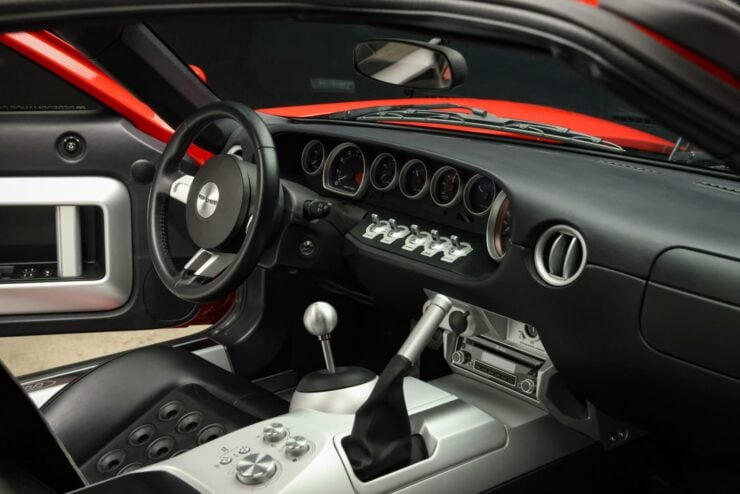

Amenities include a McIntosh CD stereo, air conditioning, push-button ignition, and remote keyless entry. The GT40-inspired gauge layout retains its central tachometer and 220 mph speedometer, and a digital odometer.
The car is now offered in California on dealer consignment with a clean Carfax report, a clean Montana title, an SCT handheld tuner, and an additional set of wheels. If you’d like to read more or register to bid you can find the listing here.





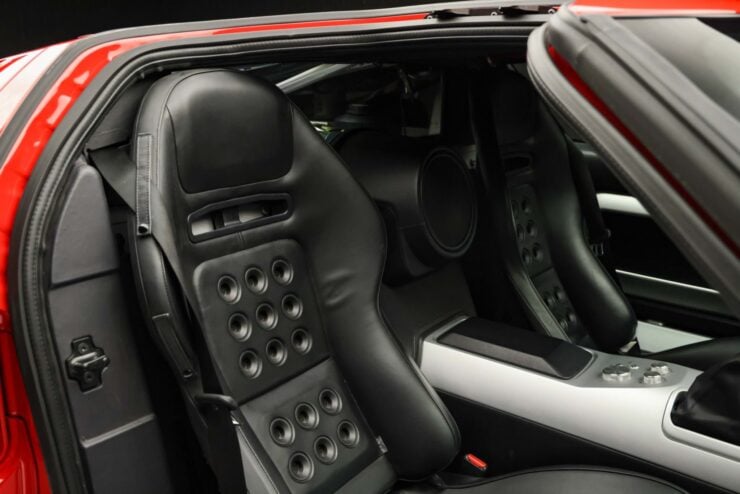

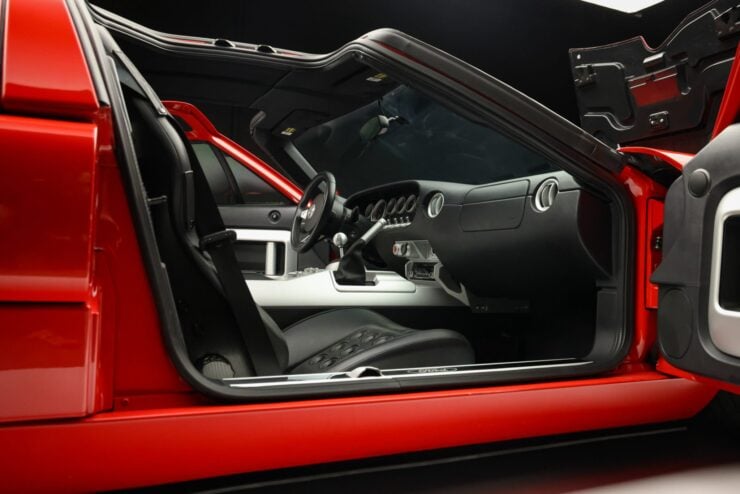

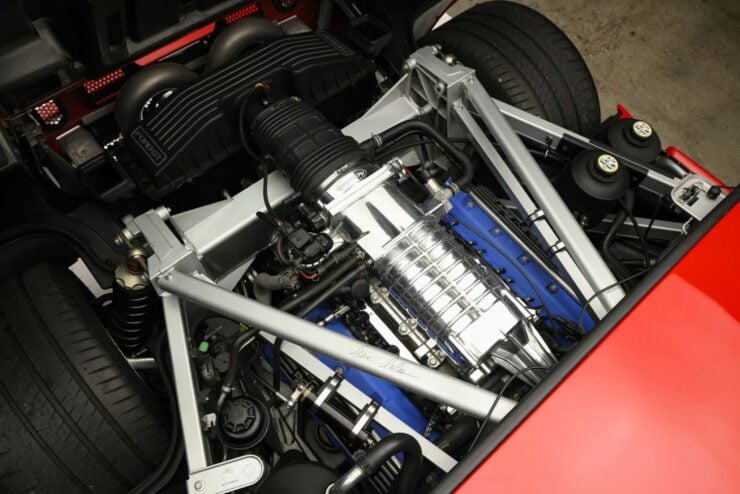
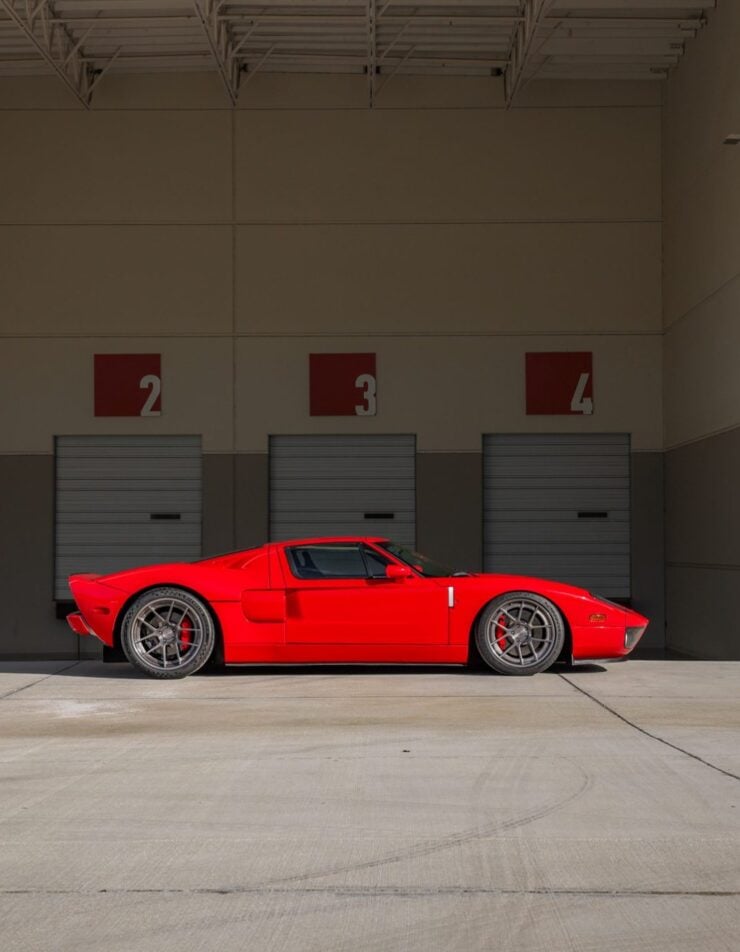



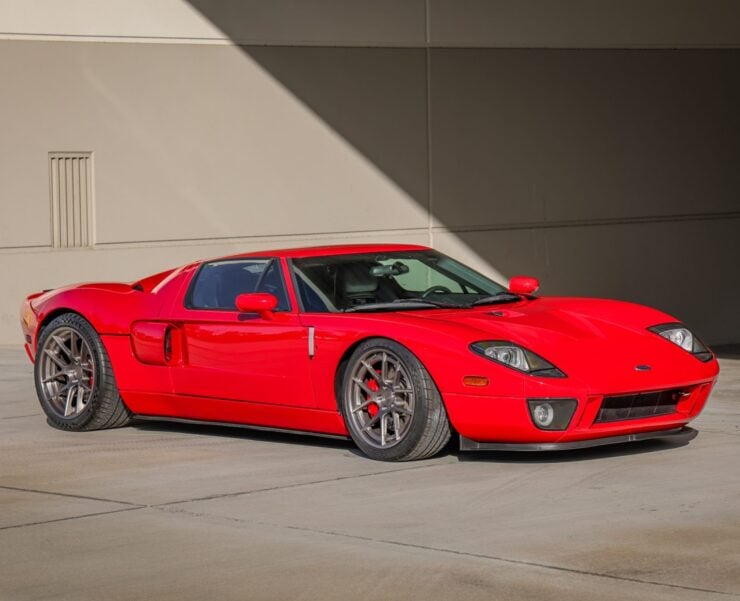



Images courtesy of Bring a Trailer






